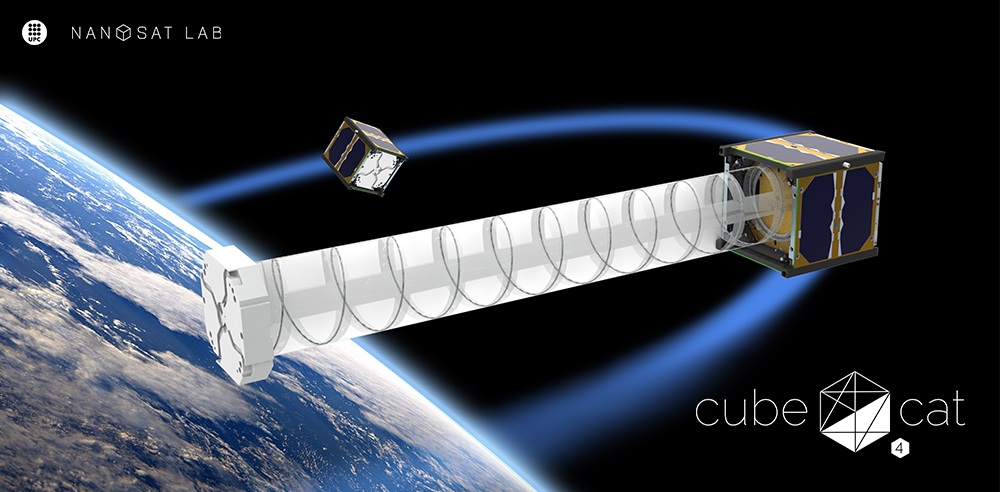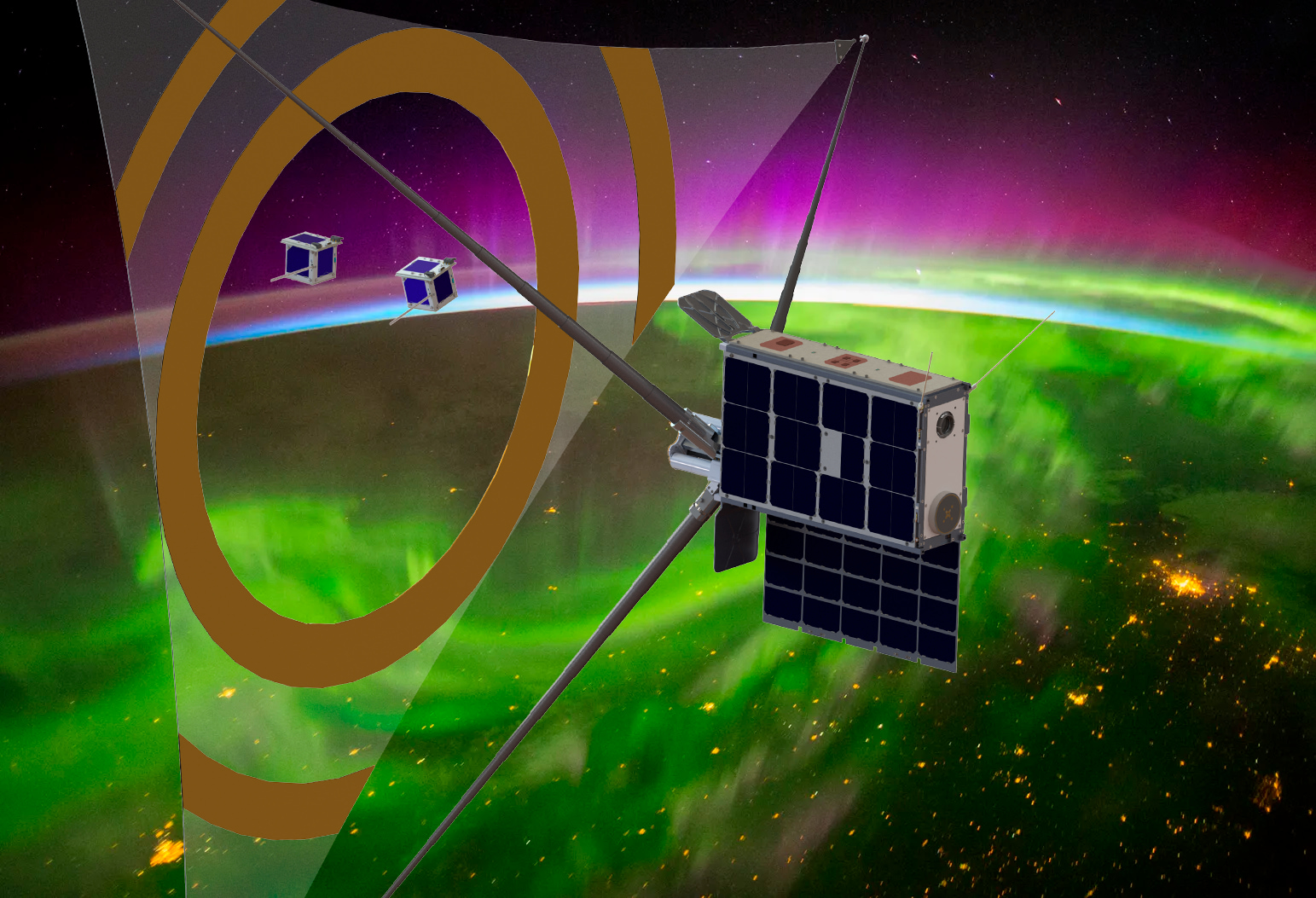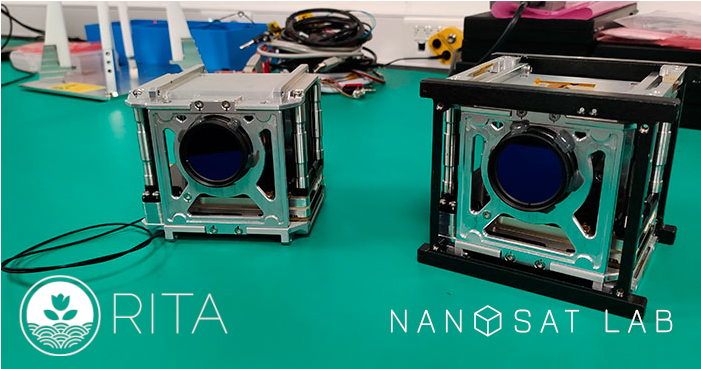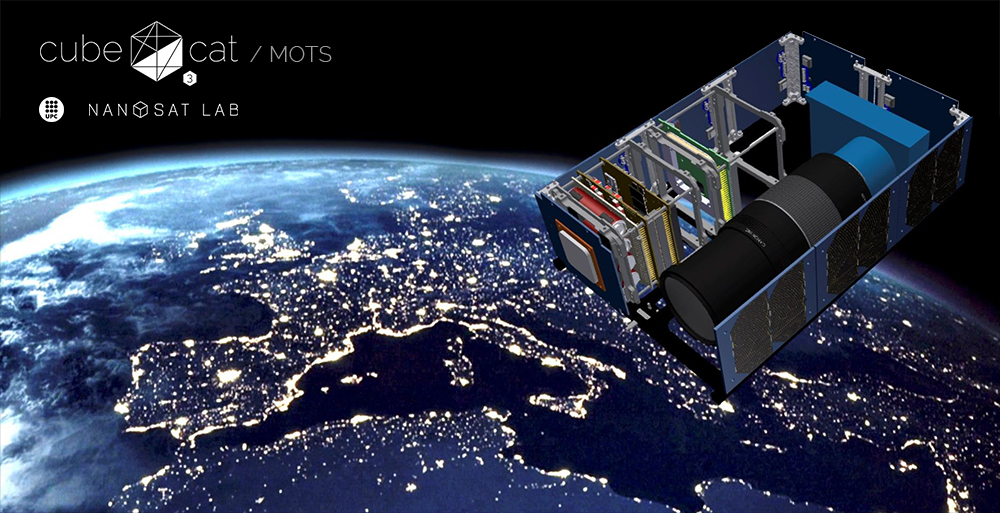· Joan A. Ruiz-De-Azua · Mission · 2 min read
FSSCat
The fifth satellite in the lab's CubeCat series
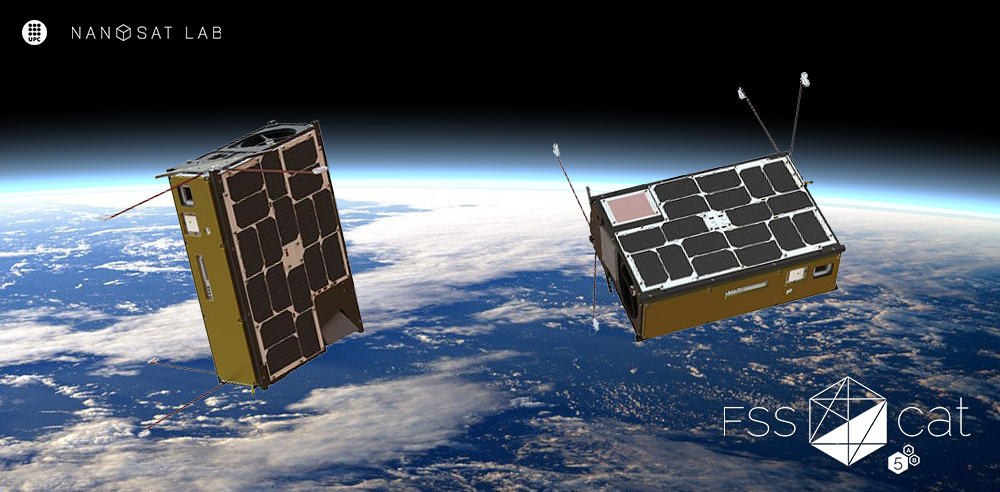
The FSSCat mission consists of two federated 6-Unit CubeSats, named ³Cat-5/A and ³Cat-5/B, supporting the Copernicus Land and Marine Environment services. As the fifth generation of the ³Cat series developed by the NanoSat Lab, these satellites aim to demonstrate advanced capabilities in Earth observation and satellite federations.
Mission Details
| Attribute | Details |
|---|---|
| Spacecraft Class | Two 6-Unit CubeSats: ³Cat-5/A and ³Cat-5/B |
| Mission Status | Operational |
| Launch Date | September 3rd, 2020, at 03:15 CEST |
| Launcher Details | Vega VV16 SSMS |
| Sponsor | European Space Agency (ESA) |
| Satellite Origami | Download Document |
Mission Overview
The mission features:
- Dual microwave payload: GNSS-Reflectometer and L-band radiometer with interference detection/mitigation.
- Multi-spectral optical payload: Measures soil moisture, ice extent, ice thickness, and detects melting ponds over ice.
- Technology demonstrators:
- Optical Inter-Satellite Link (OISL)
- Federated Satellite System (FSS)
FSSCat was the winner of the 2017 Copernicus Master ESA Small Satellite Challenge S³ and the Overall Winner.

The NanoSat Lab developed the FMPL-2 and FSSExp payloads for this mission, described below.
Flexible Microwave Payload - Version 2 (FMPL-2)

The FMPL-2 integrates a GNSS-Reflectometer and an L-band Radiometer into a single Software Defined Radio (SDR) instrument. This payload enables:
- Sea-ice detection and thickness monitoring
- Water pond detection on ice
- Low-resolution soil moisture measurements
- High-resolution soil moisture when combined with HyperScout observables
FMPL-2 Components
- Radio Frequency (RF) Front-End Module: Signal conditioning and calibration for the radiometer and amplifiers.
- Interface Board Module: Unifies interfaces, defines communication/supply buses, and provides mechanical support for the GNSS receiver.
- NanoSDR Module: Includes FPGA and ADC for signal processing and scientific data generation.
 |  |
|---|
Federated Satellite System Experiment (FSSExp)
The FSSExp demonstrates the feasibility of Federated Satellite Systems (FSS), enabling satellites to share unused resources such as:
- Memory capacity
- Downlink opportunities
One satellite with available downlink contact can act as a service provider, allowing another satellite to transmit data. This win-win collaboration demonstrates the potential of satellite federations.
FSSExp Components
- Software Component: Algorithms and code for federation deployment, hosted on a system developed by Golbriak Space.
- RF Module: UHF communications module providing an Inter-Satellite Link (ISL) with:
- 30% packet error rate
- 9.6 kbps data rate
- Maximum range of 1000 km

